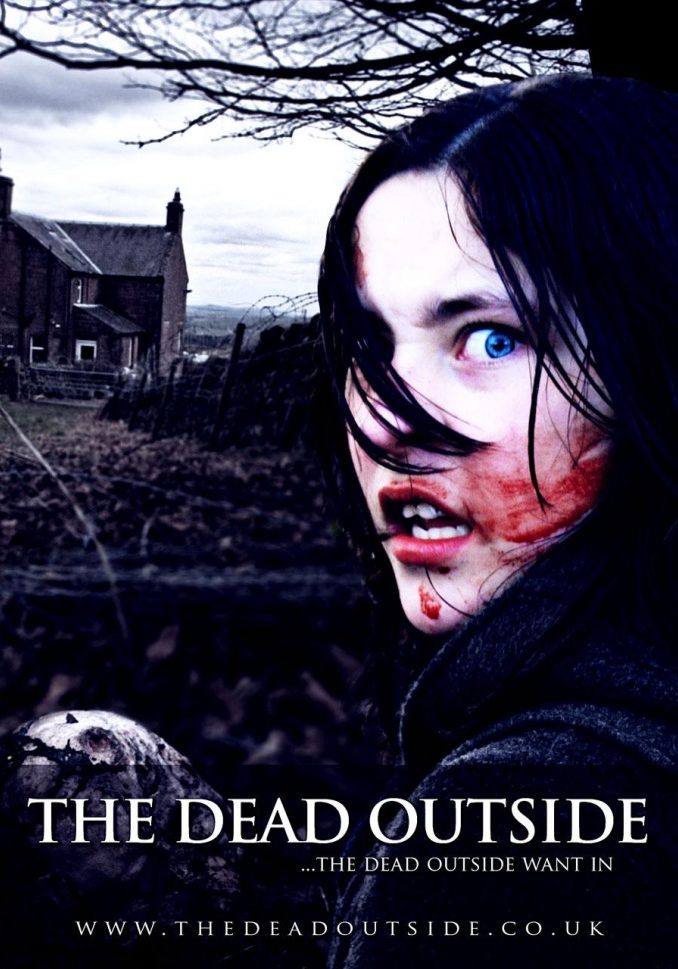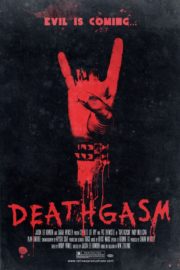A Chilling Whispers of Apocalypse: “The Dead Outside”
In 2008, director Kerry Anne Mullaney brought to the silver screen a low-budget Scottish horror film that beckoned viewers into a world of despair and intrigue with “The Dead Outside.” Set amidst the eerie backdrop of the Scottish countryside, the film unfolds a post-apocalyptic tale where a neurological pandemic has swept across the land. The focus narrows to a desolate farm where a young woman, April, grappling with the loss of her family, and Daniel, a stranger with a shrouded past, attempt to survive both the infection and each other.
Unsettling Silence: Crafting the Atmosphere
The true essence of horror often resides not in what is seen, but in what is felt. “The Dead Outside” capitalizes on this by creating an ambience of isolation and dread. Mullaney employs a less-is-more approach to horror, letting the fear of the unknown linger like fog over the desolate landscapes. Rather than relying heavily on gore or jump scares, the film utilizes the silence and bleakness of its setting to build a continuous undercurrent of tension.
Cinematography That Haunts
The visual storytelling of “The Dead Outside” is one of its most arresting features. Through adept use of muted color palettes and grim lighting, the cinematography reinforces the film’s thematic undertones of desolation and despair. While the special effects are minimal, the director smartly applies the natural dreariness of the Scottish countryside to amplify the story’s melancholic tone. The camera work often opts for stability during dialogue but is unafraid to switch to shaky handheld techniques during moments of panic and disorientation, creating a palpable sense of unease.
Soundscapes of Silence and Despair
The judicious use of the soundtrack and sound effects further complements the film’s haunting visuals. The wailing winds and ominous silences serve to unsettle the viewer, making the atmosphere thick with anticipation. When used, the music is subtle yet stirring, capable of raising hairs on the back of the neck without overshadowing the on-screen drama.
The Human Element: Characters and Performances
At its heart, “The Dead Outside” is a character-driven narrative, and much of its success hinges on the chemistry and performances of the limited cast. The characters are penned with a level of intricacy that begs for investment in their fates. Sandra Louise Douglas’ portrayal of April is particularly noteworthy, as she encapsulates both the vulnerability and the steely resolve required to survive in such a world. Conversely, Alton Milne as Daniel delivers a performance that oscillates between sympathetic and unnerving with ease.
The actors succeed in making the fear and paranoia of their characters palpable, leading the audience through an array of emotions as they navigate the devastation and the psychological toll it takes on their minds.
Harrowing Haunts and Human Horrors
“The Dead Outside” expertly treads the line between psychological and survival horror. It doesn’t rely on typical genre tropes of supernatural entities or excessive gore. Instead, the film crafts its scares through the real human responses to extreme situations. The methods used to instill fear in the audience are largely psychological, emphasizing the erosion of sanity that comes with prolonged isolation and the constant fear of infection.
The filmmaker’s restraint in disclosing the extent of the pandemic’s impact lends an air of mystery that only heightens the sense of global catastrophe. This decision encourages viewers to contemplate not only the immediate struggles of the characters but also the larger implications of such an apocalyptic event.
In terms of thematic depth, “The Dead Outside” touches upon issues of trust, the breakdown of social structures, and the will to survive when pressed against insurmountable odds. The context of a virus-induced Armageddon adds topical relevance, making it a reflective piece on human nature as much as a horror film.
Whom the Dead Beckon
This movie is not one that caters to the faint of heart or those seeking high-octane thrills. Instead, it will resonate with horror aficionados who appreciate atmospheric tension and a slow-burn narrative. It’s a film that may leave the casual viewer underwhelmed due to its deliberate pacing, but it’s a gem for those seeking a psychological exploration of horror within an apocalyptic framework.
In the grander scheme of horror classics, “The Dead Outside” doesn’t quite achieve the iconic status of masterpieces like “Night of the Living Dead” or “28 Days Later,” yet it stands as an honorable mention for its unique approach and thought-provoking undertones.
Final Verdict: A Quiet Menace
“The Den Outside” is a testament to the power of subtle horror. It is a compelling narrative wrapped in the bleakness of its environment and is bolstered by strong performances and a haunting atmosphere. While it may not be groundbreaking in its methodology, it’s an effective film that lingers in the subconscious long after the credits roll.
In conclusion, the film showcases a fine balance between character study and atmospheric horror, making it a must-watch for those who savor the psychological aspects of the genre. The movie’s shortcomings are far outweighed by its strengths, and it earns a recommendation for viewers looking for a chilling, introspective dip into the pool of post-apocalyptic horror.
Advisory: Viewers should be aware that, while not graphic in nature, the film deals with intense subjects such as mental health and survival instincts, which may be disturbing to some.




